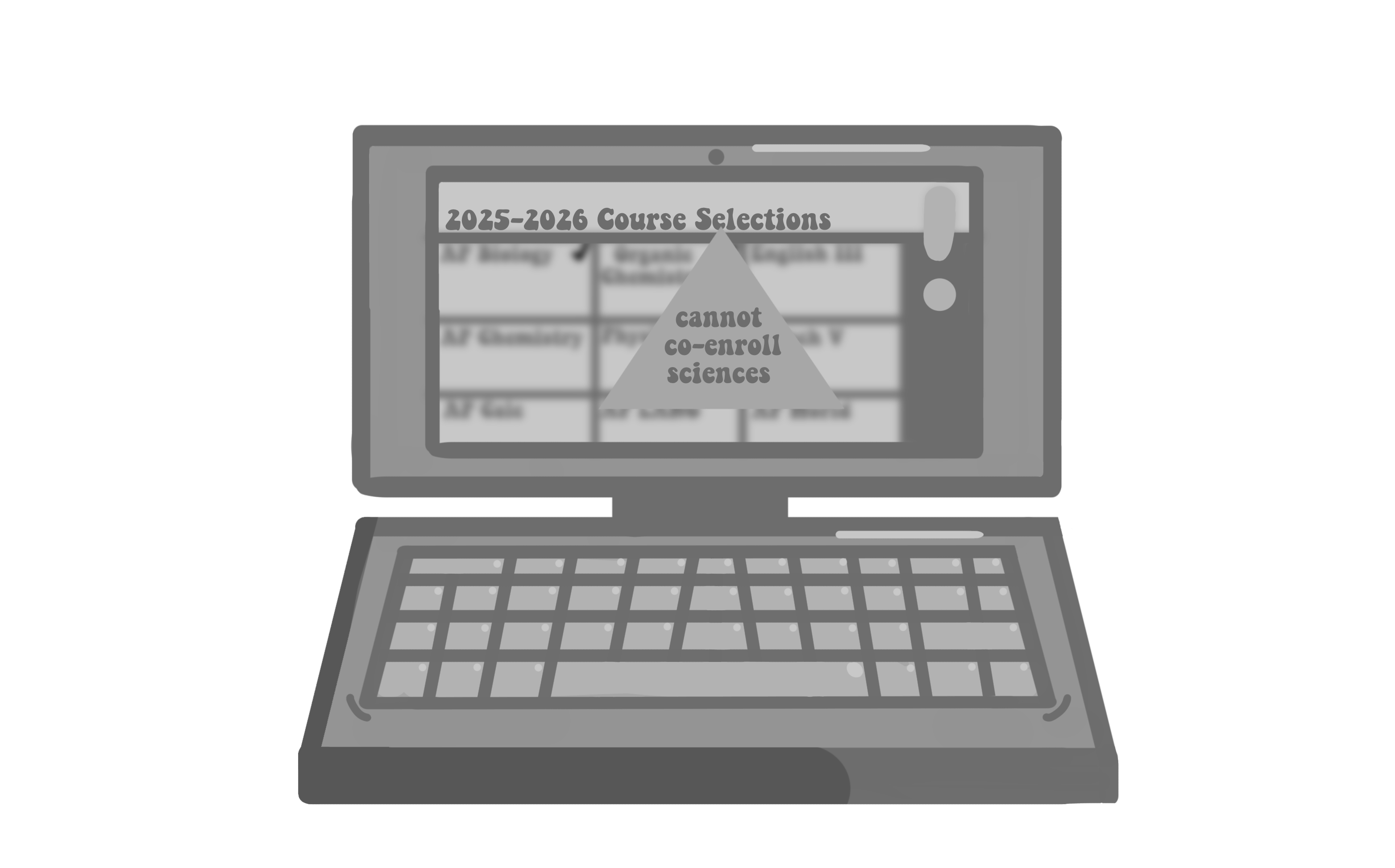On the new physics enrollment policy
March, 2025
Graphics: Madison Charles
Princeton High School has introduced significant and jarring changes to its 2025–2026 science curriculum. Placement tests for AP Physics C have been eliminated, Accelerated Physics has replaced AP Physics 1 as a mandatory prerequisite, and students can no longer double up on a lab and non-lab science course. While these changes might seem minor, students wishing to explore their interest in science now face considerable uncertainty. PHS physics teacher Oren Levi explained that the placement test was originally implemented due to the removal of AP Physics 1. “We wanted to give an opportunity to the students who would have been excluded from taking those classes because of the new requirements,” said Levy. “Now [that] the remaining students who would want to take the class have now had the opportunity to take a physics class … the test was removed.” Additionally, he added that “the school is trying to … slow down some of the kids that are overextending themselves.” Since Accelerated Physics has replaced AP Physics 1 as a mandatory prerequisite, students who have finished AP Calculus BC will be forced to start the physics curriculum by taking algebra-based Accelerated Physics.
This isn’t the first time sudden policy changes have derailed course study plans. Last year, eligibility changes preventing sophomores from taking AP Macro/Micro surprised students desiring to take those courses. Policy changes often come from valid concern for students’s well being, but their implementation leaves them flailing. In the current policy-making atmosphere, rising juniors and seniors are given no opportunity for effective high school planning — they have few options to meet new prerequisites put in place near the end of their high school journey. As a result of this change, the academic goals of students interested in physics have been hindered, requiring them to take Physics 1 Accelerated before AP Physics. For example, if a student desires to take all the AP physics courses before junior year, having to take a prerequisite class in freshman year can delay these plans.
Many students didn’t know about these changes until they had meetings with their counselors to finalize class schedules. Instead of creating roadblocks with no transparency, the district ought to implement policies with two-year delay periods. A delay period for any new policy shelters current students from the potential changes it brings, while giving standardized effects to future students. As an example, a policy change made in the 2024–2025 school year should only go into effect in the 2026–2027 school year. This allows students to effectively plan and recalibrate their high school journey. Until the district fundamentally changes the methodology of implementing new policies, placement tests can act as a stopgap to minimize the disruption on students’ academic journeys.